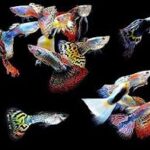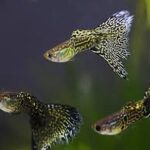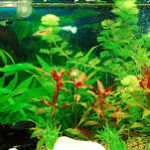Historical Significance
The Allure of Brown Hair and Green Eyes in Storytelling
Physical traits like brown hair and green eyes have long been used in literature and film to convey deeper meanings about characters. These features are not just aesthetic choices; they often symbolize personality traits, cultural backgrounds, or even supernatural elements. Brown hair, being common yet versatile, can represent reliability, earthiness, or humility. Green eyes, rarer and more striking, frequently suggest mystery, enchantment, or a connection to nature. Together, these traits create a compelling visual contrast that makes characters memorable.
From classic literature to modern cinema, characters with brown hair and green eyes have been portrayed as heroes, villains, and everything in between. Their appearances often align with their roles, reinforcing themes of duality, allure, or hidden depths. This article explores how these features have shaped iconic characters across different genres and eras.
Historical Roots in Mythology and Folklore
Long before modern literature and film, brown hair and green eyes held symbolic meaning in myths and legends. In Celtic folklore, green eyes were associated with the fae—fairies and other mystical beings—suggesting otherworldly wisdom or trickery. Brown hair, meanwhile, was often linked to the earth, grounding characters in reality or symbolizing resilience.
Greek and Roman myths also featured gods and mortals with these traits. For example, Demeter, the goddess of harvest, was often depicted with brown hair, representing fertility and the earth. Green-eyed figures, like certain interpretations of Athena, embodied intelligence and strategic thinking. These ancient associations carried into later storytelling, influencing how authors and filmmakers developed their characters.
Early Literary Examples
In classic literature, brown hair and green eyes were frequently used to distinguish protagonists or antagonists. Jane Eyre, from Charlotte Brontë’s Jane Eyre, is described with plain brown hair, reflecting her modest yet strong-willed nature. Her green eyes, however, hint at her passionate inner spirit, which defies societal expectations.
Similarly, in Wuthering Heights by Emily Brontë, Catherine Earnshaw’s wild green eyes symbolize her untamed emotions and connection to the moors. Her dark brown hair contrasts with her pale complexion, emphasizing her duality—both gentle and tempestuous. These early examples show how physical traits were used to mirror personality and fate.
Transition to Modern Interpretations
As literature evolved, so did the portrayal of brown-haired, green-eyed characters. In fantasy and adventure genres, these traits often signify a hero’s journey. For example, in J.R.R. Tolkien’s The Lord of the Rings, Éowyn’s brown hair represents her Rohirric heritage, while her piercing green eyes reflect her fierce determination to defy traditional gender roles.
In contemporary fiction, these features continue to shape character identities. Whether in romance, mystery, or dystopian stories, brown hair and green eyes remain powerful tools for characterization. Filmmakers later adopted these literary traditions, using visual storytelling to enhance these symbolic meanings.
Iconic Literary Characters with Brown Hair and Green Eyes
Classic Heroines and Their Symbolism
Many classic heroines are defined by their brown hair and green eyes, traits that underscore their complexity. Elizabeth Bennet from Pride and Prejudice is often imagined with dark brown hair, representing her practicality, while her expressive green eyes reveal her sharp wit and emotional depth. This contrast makes her one of literature’s most enduring characters.
Another example is Jo March from Little Women, whose brown hair aligns with her tomboyish, independent nature. While her eye color varies in adaptations, green-eyed portrayals emphasize her creativity and fiery spirit. These traits make her relatable yet aspirational, a balance that resonates with readers.
Villains and Antiheroes with Striking Features
Not all brown-haired, green-eyed characters are virtuous. Some of literature’s most intriguing villains and antiheroes share these traits. In The Picture of Dorian Gray, Dorian’s youthful brown hair and captivating green eyes symbolize his outward beauty, masking his moral decay. His appearance becomes a metaphor for vanity and corruption.
Similarly, in Gone with the Wind, Scarlett O’Hara’s green eyes reflect her cunning and ambition, while her dark brown hair ties her to Southern tradition. Her looks enhance her manipulative charm, making her a compelling yet flawed protagonist.
Fantasy and Adventure Characters
Fantasy literature frequently uses brown hair and green eyes to denote a character’s connection to nature or magic. In The Hunger Games, Katniss Everdeen’s brown hair represents her humble origins, while her green eyes—rare in her dystopian world—symbolize her role as the “Mockingjay,” a beacon of rebellion.
In Harry Potter, Lily Potter’s green eyes are a recurring motif, representing love and sacrifice. Her son Harry inherits them, making his eyes a visual reminder of his mother’s protection. Brown-haired characters like Hermione Granger also use their intelligence and bravery, proving that these traits can signify both ordinary and extraordinary qualities.
Modern Literary Trends
Contemporary authors continue to use brown hair and green eyes to craft memorable characters. In Twilight, Alice Cullen’s green eyes and brown hair highlight her pixie-like personality and foresight. In A Court of Thorns and Roses, Feyre Archeron’s green eyes tie her to the faerie world, while her brown hair keeps her human roots visible.
These examples show how physical traits remain a vital part of character development, influencing readers’ perceptions and emotional connections.
Iconic Film Characters with Brown Hair and Green Eyes
The Silver Screen’s Most Memorable Faces
While literature has long used brown hair and green eyes to define characters, film brings these traits to life in vivid detail. The interplay of lighting, camera angles, and an actor’s expressive abilities amplifies the symbolic power of these features. From classic Hollywood to modern blockbusters, brown-haired, green-eyed characters have left an indelible mark on cinema—often becoming cultural icons in the process.
Classic Hollywood’s Enigmatic Stars
In the golden age of Hollywood, actresses like Elizabeth Taylor and Ava Gardner popularized the allure of green eyes, often paired with dark brown hair for dramatic contrast. Taylor’s portrayal of Cleopatra (1963) cemented her as the epitome of exotic beauty, with her emerald eyes symbolizing both regal power and seductive danger. Similarly, Ava Gardner’s role in The Killers (1946) showcased how green eyes could convey femme fatale mystique, drawing viewers into her character’s treacherous charm.
Male leads were not exempt from this trend. James Dean’s brooding, brown-haired, green-eyed look in Rebel Without a Cause (1955) embodied youthful rebellion, while Paul Newman’s piercing gaze in Cool Hand Luke (1967) turned stoicism into something magnetic. These actors proved that brown hair and green eyes could signify everything from rugged individualism to smoldering intensity.
Fantasy and Sci-Fi’s Otherworldly Figures
Fantasy and science fiction films frequently use green eyes to denote supernatural or alien qualities. In The Lord of the Rings films, Liv Tyler’s Arwen possesses luminous green eyes, emphasizing her Elven grace and ancient wisdom. Similarly, Angelina Jolie’s Maleficent in Sleeping Beauty (2014) wields her hypnotic green gaze as a weapon, embodying both menace and tragic depth.
Sci-fi takes this further by associating green eyes with artificiality or enhanced beings. In Blade Runner 2049 (2017), Ana de Armas’ Joi—a holographic AI—has ethereal green eyes that mirror her intangible yet emotionally resonant existence. Even animated films leverage this trope; Disney’s Tangled (2010) gave Rapunzel green eyes to underscore her magical hair’s connection to nature and healing.
Modern Heroines and Antiheroes
Contemporary cinema continues to cast brown-haired, green-eyed women as complex leads. Jennifer Lawrence’s Katniss Everdeen (The Hunger Games) became a symbol of defiance, with her earthy brown hair and striking green eyes reflecting her transition from survivor to revolutionary. Meanwhile, Emma Stone’s Cruella de Vil (Cruella, 2021) used her dramatic looks to embody chaotic creativity, blending vintage glamour with punk rebellion.
Male characters are no less compelling. Chris Evans’ Steve Rogers (Captain America) initially sports brown hair and blue eyes, but when transformed into a super-soldier, his gaze seems almost otherworldly—hinting at his enhanced nature. In contrast, Tom Hiddleston’s Loki (Thor) weaponizes his green eyes, making them flicker between mischief and vulnerability, keeping audiences guessing about his true loyalties.
Horror and Thriller’s Unsettling Gaze
Horror films exploit the unsettling allure of green eyes, often pairing them with brown hair for an eerily familiar yet uncanny effect. Mia Farrow’s Rosemary in Rosemary’s Baby (1968) uses her wide green eyes to project paranoia and creeping dread. More recently, Florence Pugh’s Dani in Midsommar (2019) wears her green-eyed grief like a mask, making her descent into cult hysteria all the more haunting.
Villains, too, benefit from this combo. The Wicked Witch of the West (The Wizard of Oz) and her green skin may dominate pop culture, but Margaret Hamilton’s piercing eyes sold her malevolence. Modern horror icons like Bill Skarsgård’s Pennywise (IT) use colored contacts to unnerving effect, proving that green eyes can unnerve as easily as they enchant.
Animation’s Expressive Potential
Animated films maximize the expressiveness of brown hair and green eyes, often exaggerating them for emotional impact. Disney’s Brave (2012) gave Merida wild, curly brown hair and bright green eyes to mirror her untamed spirit. In Studio Ghibli’s Howl’s Moving Castle (2004), Howl’s green-eyed charm becomes a metaphor for his dual nature—both vain and deeply compassionate.
Even darker animations leverage this. Coraline (Coraline, 2009) has green eyes that mirror the Other World’s eerie allure, while The Nightmare Before Christmas’ Sally uses hers to convey fragility and quiet resilience.
A Visual Language for Character Depth
Film transforms the literary symbolism of brown hair and green eyes into something visceral. Whether through an actor’s nuanced performance or an animator’s artistry, these traits become shortcuts for personality, motive, and emotional stakes. As cinema evolves, so too will their meanings—but their power to captivate audiences remains timeless.
Cultural Impact and Conclusion
The Enduring Symbolism of Brown Hair and Green Eyes
Throughout literature and film, brown hair and green eyes have carried deep symbolic weight. These traits are more than just aesthetic choices—they serve as visual shorthand for personality, heritage, and even destiny. Brown hair often grounds characters in realism, representing resilience, humility, or earthiness. Green eyes, being rare and striking, frequently suggest mystery, magic, or an intense emotional depth. Together, they create a compelling contrast that makes characters unforgettable.
This combination has been used to define heroes, villains, and complex antiheroes alike. Whether in classic novels, modern fantasy, or blockbuster films, these features help shape audience perceptions before a character even speaks. The consistency of their use across genres and eras proves their lasting power in storytelling.
Cultural Perceptions and Stereotypes
Society’s fascination with brown hair and green eyes has influenced how these traits are portrayed. In many cultures, green eyes are associated with enchantment—sometimes even considered a sign of supernatural ability. Celtic legends linked them to fairies, while medieval superstitions claimed green-eyed individuals had a “piercing gaze” that could see truths others missed. Brown hair, being common yet versatile, often represents the “everyman” or “everywoman,” making characters relatable while still allowing for individuality.
However, these traits can also reinforce stereotypes. Green-eyed characters are frequently cast as seductive, mysterious, or dangerous—think of femme fatales in noir films or cunning tricksters in fantasy. Brown-haired characters, on the other hand, are sometimes seen as dependable but unremarkable unless other traits (like green eyes) elevate them. Modern storytelling has begun challenging these tropes, using these features in more nuanced ways.
The Evolution in Modern Media
As representation in media becomes more diverse, the portrayal of brown hair and green eyes has also evolved. No longer just a marker of European beauty standards, these traits now appear in characters of various ethnic backgrounds, broadening their symbolic range. For example, Disney’s Encanto features Mirabel Madrigal, a brown-haired, green-eyed heroine whose looks reflect her Colombian heritage rather than fitting an old fantasy trope.
In sci-fi and dystopian stories, green eyes are sometimes used to signify genetic modification or alien ancestry (e.g., Dune’s Bene Gesserit). Brown hair remains a staple for relatable protagonists, but its meaning shifts depending on context—whether it’s Katniss Everdeen’s survivalist grit or Geralt of Rivia’s weathered toughness in The Witcher.
Why These Traits Remain Iconic
The staying power of brown hair and green eyes in storytelling comes from their versatility. They can signify:
- Naturalism vs. Magic – Brown hair roots a character in reality, while green eyes hint at something extraordinary.
- Duality – Characters like Scarlett O’Hara or Loki balance charm and danger, with their looks reinforcing their complexity.
- Legacy – When traits are passed down (like Harry Potter’s eyes), they create emotional connections across generations.
Filmmakers and authors continue using these traits because they work—readers and viewers instinctively pick up on their implied meanings. Even as trends change, the contrast between earthy brown hair and vivid green eyes remains a powerful tool for character design.
Final Thoughts: A Lasting Legacy in Storytelling
From ancient myths to today’s blockbusters, brown hair and green eyes have shaped some of the most memorable characters in fiction. They serve as visual storytelling devices, conveying personality, heritage, and inner conflict without a single word. While their interpretations have evolved over time, their impact remains undeniable.
As audiences crave more diverse and complex characters, these traits will likely continue adapting—perhaps taking on new meanings in futuristic settings or underrepresented cultures. Yet one thing is certain: the allure of brown hair and green eyes in literature and film isn’t fading anytime soon. They remain timeless markers of depth, intrigue, and humanity in the stories we love.










